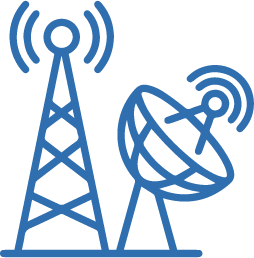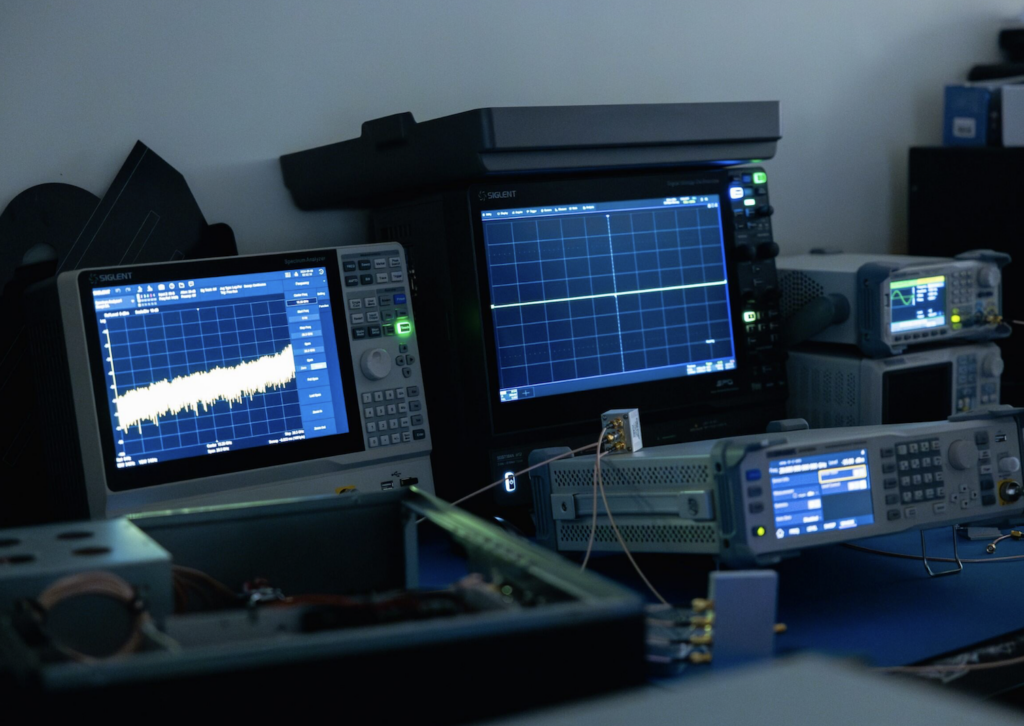RESEARCH: RADIO ASTRONOMY
Radio astronomy is essential because it allows us to observe the universe in wavelengths that are invisible to optical telescopes, revealing hidden phenomena like pulsars, gas spiraling black holes, and distant galaxies. By studying radio emission, we gain a deeper understanding of cosmic processes and the fundamental forces shaping the universe.
To understand the research we pursue at Florida Space Institute in the context of Radio Astronomy, it is important to know the fundamentals of it.
WHAT IS RADIO ASTRONOMY?
Radio astronomy is a fascinating field that studies celestial objects and phenomena using radio waves, a part of the electromagnetic (EM) spectrum. The EM spectrum includes various forms of radiation, such as radio waves, microwaves, infrared, visible light, ultraviolet, X-rays, and gamma rays. Among these, radio waves have the longest wavelengths and lowest energy, making them ideal for observing cooler and distant cosmic objects like space plasmas,, gas clouds, and cosmic background radiation. Unlike sound waves, which require a medium like air to travel, radio waves can move through the vacuum of space, traveling at the speed of light.
Radio astronomy takes advantage of the transparency of Earth’s atmosphere, which allows radio waves to reach the surface while blocking many other EM wavelengths. This is true even when the weather isn’t perfect, like a cloudy day. This accessibility enables the construction of ground-based radio telescopes that can study phenomena invisible to optical telescopes. Thermal radiation, such as blackbody radiation and emissions from ionized gases, is one of the primary types of radio signals studied. Non-thermal radiation, like synchrotron emission from charged particles spiraling in magnetic fields, and naturally occurring events, also provides critical insights into cosmic events.
The field owes its origins to pioneers like Karl Jansky, who discovered radio waves emanating from the Milky Way in the 1930s, and Grote Reber, who built the first radio telescope and created early maps of cosmic radio emission. Their work laid the foundation for modern radio astronomy, which now employs advanced techniques like interferometry to combine signals from multiple telescopes, simulating the resolution of a much larger dish.
Amateurs and beginners can also engage in radio astronomy through simple and accessible projects. For instance, building a basic “Itty-Bitty Telescope” (IBT) allows hobbyists to detect celestial signals like Jupiter’s radio storms or solar flares. Other projects include detecting meteors using FM radio or studying solar activity through Sudden Ionospheric Disturbance (SID) monitors. These initiatives provide an exciting entry point into the field while contributing valuable observations to the broader scientific community.
To locate celestial objects, astronomers use a coordinate system similar to Earth’s latitude and longitude, known as Right Ascension (RA) and Declination (DEC). These fixed coordinates allow for precise sharing of object locations, facilitating collaborative studies and discoveries. Although creating detailed radio images can take hours, days, or even years due to the nature of data collection, advancements in technology and techniques continue to make this process more efficient and accessible. Overall, radio astronomy bridges professional and amateur efforts, encouraging curiosity and collaboration. By exploring the invisible universe through radio waves, it reveals a wealth of knowledge about the cosmos and its diverse phenomena.
*This information was sourced from the pdf attached here, original writing credits: Jon Wallace
Here are some of the main components we use research in Radio Astronomy to further understand celestial phenomena

ELECTROMAGENTIC SPECTRUM

RADIO WAVES

RADIO EMISSIONS

COORDINATE SYSTEMS
FLORIDA SPACE INSTITUTE’S RADIO ASTRONOMY RESEARCH:

CARSE PROJECT
Radio astronomy offers a unique lens to explore the universe by analyzing faint radio signals emitted by celestial objects. However, a significant challenge faced by radio astronomers is the pervasive interference from man-made radio frequency transmissions. Learn about the CARSE Project and the devices that could potentially work around these issues.